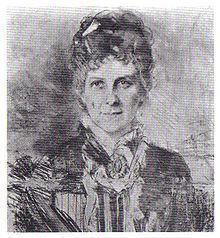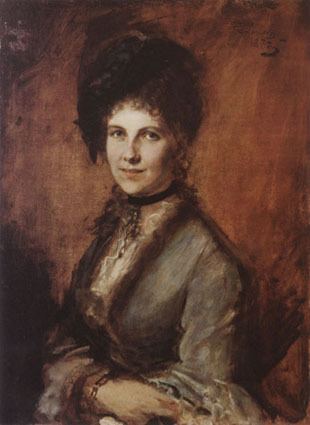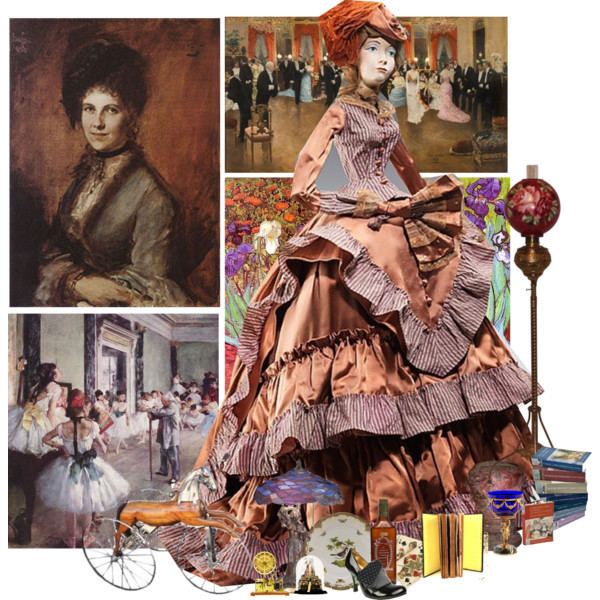Occupation Salonniere | Name Marie Schleinitz | |
 | ||
Died May 18, 1912, Berlin, Germany | ||
Marie ("Mimi") Baroness (from 1879: Countess) von Schleinitz (from 1886: Schleinitz-Wolkenstein) (22 January 1842, Rome – 18 May 1912, Berlin) was an influential salonnière of the early German Reich in Berlin and one of the most important supporters of Richard Wagner.
Contents

Youth

Marie – nicknamed "Mimi" – was born in Rome as daughter of Baron Ludwig August von Buch, Prussian ambassador to the Holy See. Her father died in 1845, and her mother, Marie, married Prince Anthony of Hatzfeldt-Trachenberg (1808–1874) in 1847. By this marriage, the economic situation of mother and daughter, which until then had not been comfortable, was improved due to the wealth of Hatzfeldt. von Schleinitz was trained as a pianist from her early youth; taught by such virtuosos as Carl Tausig, she developed a remarkable musical talent. Her acquaintance with Franz Liszt, who also showed interest in the advancement of her musical abilities, dates from this period.
Marriages
In 1865 von Schleinitz married Baron Alexander von Schleinitz (1807–1885), then Prussian minister of the royal household. Her husband was thirty-five years older than her. In 1879 they were made count and countess by emperor William I, German Emperor. They had no children.
Her first husband died in 1885. In 1886 von Schleinitz married Count Anton von Wolkenstein-Trostburg (1832–1913), Austrian ambassador first in Berlin, then in Saint Petersburg, and finally (from 1894) in Paris. Henceforth, she called herself "Countess Schleinitz-Wolkenstein". In summertime, they retired to the country estate of the Wolkenstein family, the castle Ivano in the south of the County of Tyrol. After her second husband's retirement in 1904, they resettled in Berlin, where both died shortly before the breakout of World War I.
Richard Wagner
von Schleinitz became a passionate fan of Richard Wagner (1813–1883) beginning from the early 1860s, when she made his acquaintance of at a concert in Breslau. As the wife of the Prussian minister of the royal household, von Schleinitz used her social influence that was connected with her new rank to support and publicise Wagner's career among the leading circles of Prussian society. She supported him at the Prussian court; Emperor William I, granted him the opening of the Bayreuth Festival in 1876. von Schleinitz helped found the "Bayreuther Patronatsverein" (Bayreuth Patronage Club) in 1870, whose purpose was financing the diverse projects of Wagner, among them the building of the Bayreuth Festspielhaus, which was completed in 1876.
von Schleinitz and Wagner were close personal friends from their first meeting, and exchanged many letters. After Wagner's remarriage in 1870, von Schleinitz became an intimate friend of Wagner's second wife, Cosima Wagner, whose daughter Daniela, later Mrs. Henry Thode, she introduced into Berlin society in the 1880s. Wagner died in 1883.
Literary salon
From the beginning of her marriage, von Schleinitz hosted a literary salon at the ministerial residence of her husband at No. 77 Wilhelmstrasse in Berlin. She placed particular emphasis on the cultural and intellectual orientation of her salon, which contributed to her later fame as the only aristocratic woman in Berlin involved in modeling the cultural shape of the capital of the recently created German Empire. She mixed aristocratic and bourgeois elements in her salon, which was a novelty in the then still quite feudal society of Prussia. Until then, nobles, officers, and civil officials had scarcely had come into contact with intellectuals, scholars, and businessmen.
In consequence of her second marriage to Wolkenstein, von Schleinitz gave up her salon in Berlin,and accompanied her new husband on his several diplomatic missions. After his retirement from service in 1904, she reopened her house in Berlin, where she received personal friends and members of the political and cultural life of the Reich until her death in 1912.
Bismarck
Besides her friendship to Wagner, von Schleinitz was known for her rivalry with Otto von Bismarck (1815–1898). The Prussian prime minister and later Chancellor of Germany, who maintained a conservative, authoritarian rule over Prussia and Germany, was unsympathetic to von Schleinitz due to her liberal mentality. Bismarck was an enemy of her husband, who had been one of the protagonists of the so-called "new era" from 1858 to 1862, when William I and his wife Augusta followed a moderate strategy of modernization and liberalization of the Prussian state. von Schleinitz himself was a favorite of the liberal-minded queen Augusta. Nevertheless, von Schleinitz made several unsuccessful attempts to reconcile Bismarck with her husband and herself.
Historical role
von Schleinitz stands as a symbolic figure of the little-known liberal-aristocratic opposition against Bismarck's conservative politics during the foundation of the German Reich, as well as for a short, intense blossoming of culture and intellectuality in Germany historically located between the downfall of romanticism and the beginning of modernity.
